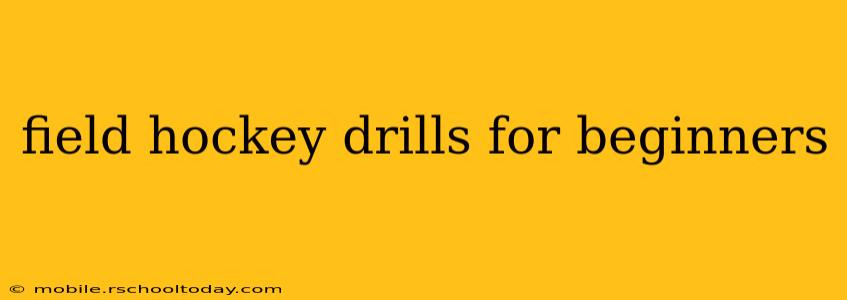Field hockey is a fast-paced, exciting sport that requires skill, teamwork, and strategy. For beginners, mastering the fundamentals is key before moving on to more advanced techniques. This guide provides a range of field hockey drills perfect for honing your skills, whether you're just starting or looking to solidify your basics. We'll cover essential skills and address common beginner questions.
Getting Started: Basic Equipment and Safety
Before diving into drills, let's ensure you have the right equipment and understand basic safety precautions. You'll need a hockey stick (right- or left-handed depending on your preference), a field hockey ball, shin guards (crucial for protecting your legs), and ideally, appropriate footwear with good grip. Always ensure the playing area is clear of obstacles and that you're aware of your surroundings to prevent injuries.
Essential Drills for Beginners
These drills focus on the core skills: ball control, passing, and shooting.
1. Ball Control Drills:
-
Dribble Around Cones: Set up a series of cones in a small area. Practice dribbling the ball around the cones, focusing on keeping the ball close to your stick and maintaining control at different speeds. Start slowly to build confidence and gradually increase speed. This helps develop stick skills and ball awareness.
-
The "Figure 8": Place two cones a few feet apart. Dribble the ball around the cones in a figure-eight pattern, alternating your hands and focusing on smooth transitions. This improves your agility and hand-eye coordination.
-
Stop and Go: Dribble the ball, then practice stopping it quickly and accurately using your stick. Alternate between dribbling and stopping, building your control and precision.
2. Passing Drills:
-
Partner Passing: Find a partner and stand a few feet apart. Practice passing the ball back and forth, focusing on accuracy and control. Gradually increase the distance between you. This teaches the importance of accurate passes and receiving techniques.
-
Passing Accuracy: Place a target (e.g., a cone or marker) a short distance away. Practice passing the ball accurately towards the target. This drills precision and target-oriented passing.
3. Shooting Drills:
-
Push Pass Shots: Start with a push pass motion, but aim to propel the ball into a target or goal with more power. Focus on using the whole stick and following through with your shot. This builds power and control into your shooting technique.
-
Simple Goal Shooting: Set up cones to create a “goal”. Practice shooting from different angles, focusing on hitting the target accurately. This establishes confidence and precision in hitting a target.
Frequently Asked Questions (FAQs)
Here are some common questions beginners ask about field hockey drills:
How often should I practice?
Consistency is key! Aim for at least two to three practice sessions per week, even if they're short sessions of 30-45 minutes. Regular practice helps you retain skills and improve more quickly.
What are some good resources for learning more?
Numerous online resources, including video tutorials on YouTube, can provide visual aids and further instruction. Local field hockey clubs often offer beginner courses and coaching sessions.
How can I improve my stick handling?
Focus on the ball control drills mentioned above. Practice regularly, and pay attention to your grip, the angle of your stick, and your body position to enhance your stick handling skills significantly.
What's the best way to learn to shoot accurately?
Accurate shooting is a result of consistent practice and proper technique. Start with shorter distances and gradually increase the range as you feel more confident. Focus on your body position, stick angle, and follow-through. Break down the shooting motion into smaller, manageable steps.
What are some common mistakes beginners make?
Common mistakes include incorrect grip (resulting in poor control), improper body posture, and not following through with shots. Review your technique frequently to prevent developing bad habits.
Conclusion
Mastering field hockey takes time and dedication. By consistently practicing these basic drills and focusing on the fundamentals, you'll build a strong foundation and enjoy the rewards of improved skills and enhanced confidence on the field. Remember to have fun and celebrate your progress along the way!
